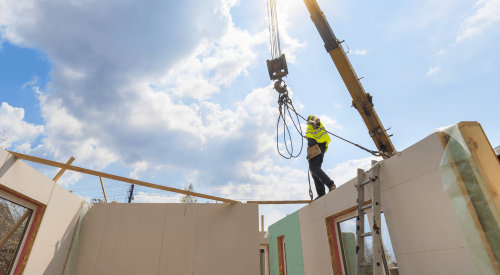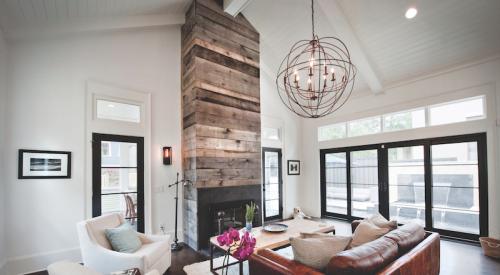| Roy Diez's Editorial Archives |
The question was easy to answer: Is there a need for expanded training programs for trade contractors -- specifically, framing trade contractors?
Should the industry have a certified framer program? Of course, my answer was a resounding yes!
And, in fact, there is an ongoing and major quality-assurance initiative directed at educating and improving the quality of wood framing contractors. Launched by the NAHB Research Center and PATH (the Partnership for Advancing Technology in Housing) in cooperation with the Wood Truss Council, this initiative aims to achieve ISO 9000 levels of quality assurance and, eventually, lead to a certified framer program for the residential construction industry.
The NAHB Research Center has already developed a "Quality Assurance Guide," and pilot programs are being carried out in the field with K. Hovnanian and All-Tech Construction in New Jersey and with Del Webb and Shuck and Sons in Arizona.
It's hoped that the pilot projects will yield a specific set of tools, including a framing quality manual, use-of-materials documents, templates for job-site inspections and forms for framers to use to develop a quality-assurance program.
A quality task force is working with framers in the field to identify key problem areas and develop graphics-intensive, one-page educational fact sheets, both in English and Spanish, on each of these "hot spots."
How critical is the need for framer training or an education program? Huge! Poor framing techniques have been pinpointed as a major cause of home failures in recent natural disasters. One large-volume builder I talked to estimated that nearly 50% of his homes had warranty call-backs for framing purposes. Each of these call-backs costs an estimated $100 to $125.
The current system often fails in that nonconforming work is passed on from one trade to another, resulting in rework, increased time, multiple trips and delays, increased cycle time, lower quality and added costs.
It's no secret that the lack of skilled, well-trained labor has become a critical issue for builders.
I have been unable to find good statistics on the number of framers in the construction industry. Using simple math, however, it's easy to see that the numbers are enormous.
Figuring that four to six framers are used for every single-family or multifamily housing start, then, based on an average of 1.5 million housing starts each year, some 500,000 framers are just on the residential side. NAHB has 19,200 member companies that say their main occupation is carpentry or framing, and these firms report a total of 605,000 employees.
Add to these figures framers in the commercial field, and you have a conservative estimate of some 1.5 million framers in this country.
So the educational demand is, indeed, huge. And the Home Builder Institute estimates that our industry must attract 340,000 new tradespeople each year.
What does this mean for building product manufacturers?
Builders are most definitely looking for help in the short term on ways to simplify field work and increase labor productivity in the field, and in the long term on ways to recruit people into the construction industry.
They want products that can be installed more simply by a work force that does not have apprentice training and whose primary language is not English. Focus on "Bubba-proof" installation techniques. Products that allow the unskilled or new framer to do the job.
When introducing a product, make it easy for potential customers to network with other builders who have been using the product and can share installation techniques or concerns.
As for help in solving the industry's long-term labor problems, a number of framing and trade apprenticeship programs need your support.












